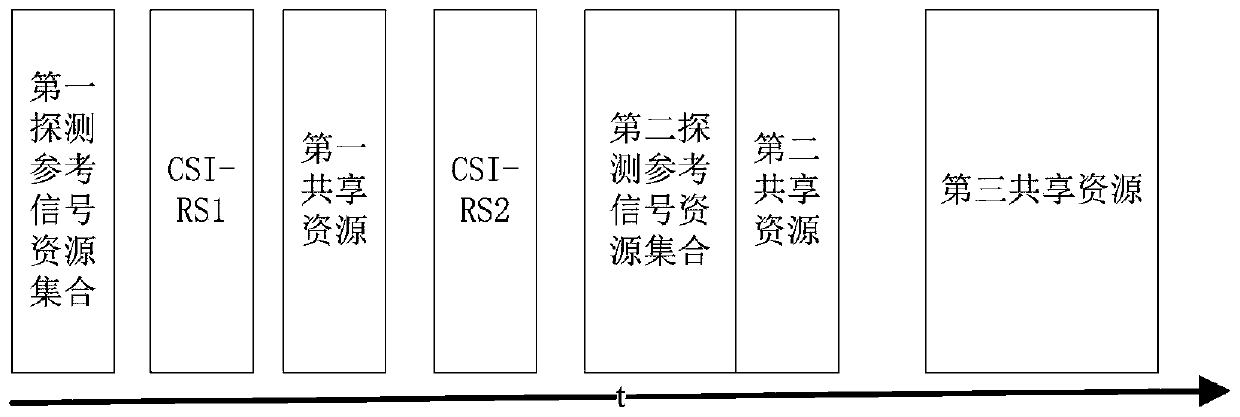A data transmission method in a narrowband Internet of Things based on a D2D architecture
A data transmission method and a narrowband Internet of Things technology, which is applied in the field of data transmission in the narrowband Internet of Things, can solve problems such as low spectrum efficiency, and achieve the effects of increasing capacity, ensuring reliability, and improving data transmission efficiency
- Summary
- Abstract
- Description
- Claims
- Application Information
AI Technical Summary
Problems solved by technology
Method used
Image
Examples
Embodiment 1
[0038] The base station sends the first configuration information and the downlink channel state information reference signal CSI-RS1 to the terminal located in the geographic location X. The first configuration information includes at least: information about the number of receiving antennas of the base station. If the number of receiving antennas M is greater than or equal to 128, The first configuration information further includes first sounding reference signal resource set information and first sounding reference signal sequence set information. It should be noted that the more receiving antennas, the stronger the ability of the base station to distinguish terminals through spatial information, and the more spatial fingerprint information available, so that the base station can effectively distinguish terminals by acquiring the uplink channel of the terminal, thereby improving The spectral efficiency of the system.
[0039] The terminal receives the first configuration info...
Embodiment 2
[0048] The base station sends the first configuration information and the downlink channel state information reference signal CSI-RS1 to the terminal located in the geographic location X. The first configuration information includes at least: information about the number of receiving antennas of the base station. If the number of receiving antennas M is greater than or equal to 128, The first configuration information further includes first sounding reference signal resource set information and first sounding reference signal sequence set information. It should be noted that the more receiving antennas, the stronger the ability of the base station to distinguish terminals through spatial information, and the more spatial fingerprint information available, so that the base station can effectively distinguish terminals by acquiring the uplink channel of the terminal, thereby improving The spectral efficiency of the system.
[0049] The terminal receives the first configuration info...
Embodiment 3
[0058] The base station sends the first configuration information and the downlink channel state information reference signal CSI-RS1 to the terminal located in the geographic location X. The first configuration information includes at least: information about the number of receiving antennas of the base station. If the number of receiving antennas M is greater than or equal to 128, The first configuration information further includes first sounding reference signal resource set information and first sounding reference signal sequence set information. It should be noted that the more receiving antennas, the stronger the ability of the base station to distinguish terminals through spatial information, and the more spatial fingerprint information available, so that the base station can effectively distinguish terminals by acquiring the uplink channel of the terminal, thereby improving The spectral efficiency of the system.
[0059] The terminal receives the first configuration info...
PUM
 Login to View More
Login to View More Abstract
Description
Claims
Application Information
 Login to View More
Login to View More - R&D Engineer
- R&D Manager
- IP Professional
- Industry Leading Data Capabilities
- Powerful AI technology
- Patent DNA Extraction
Browse by: Latest US Patents, China's latest patents, Technical Efficacy Thesaurus, Application Domain, Technology Topic, Popular Technical Reports.
© 2024 PatSnap. All rights reserved.Legal|Privacy policy|Modern Slavery Act Transparency Statement|Sitemap|About US| Contact US: help@patsnap.com









